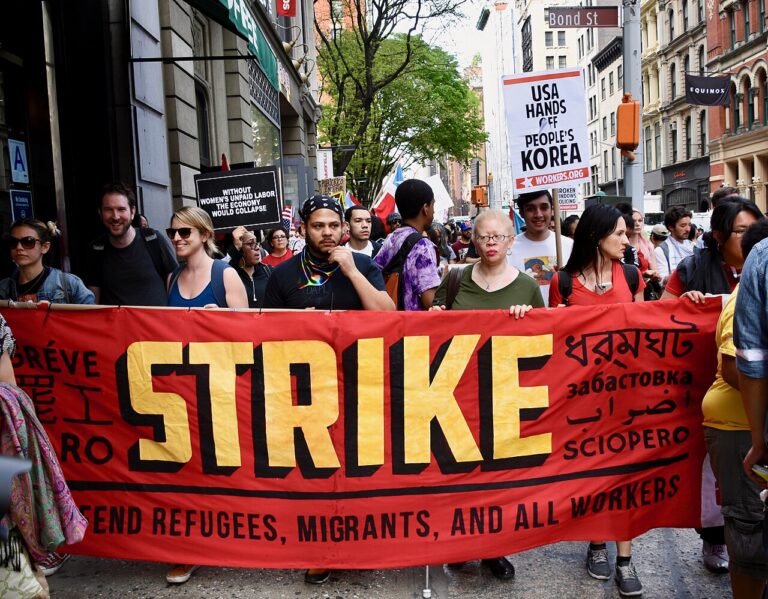The Bay Area Rapid Transit’s (BART) two largest unions recently ratified the settlement that ended the four-day strike last month, according to the LA Times. Under the new four-year agreement, “union members will start paying into their pensions. Changes were also made to healthcare coverage and retirement benefits. In exchange, workers will get a roughly 15.3% pay raise over the next four years.” BART also agreed to make a number of workplace safety improvements.
Lydia DePillis argues in the Washington Post that Walmart’s promise earlier this year to spend $50 billion over 10 years on efforts to source more products in the US might be a serious pledge. She explains that several factors, including America’s natural gas boom, rising labor costs in China, the risk of global supply chains, are making it more attractive to do business in the US. Moreover, she writes, “America’s poverty is starting to hurt Walmart’s bottom line,” so the company has an even greater incentive to ensure that its customers and workers can afford the products it’s selling.
In the Washington Post, Mike Konczal writes about a new report from the Economic Policy Institute that gives an overview of recent changes to worker and labor protections since the Tea Party came to power in 2010. The report, writes Konczal, “documents how extensive anti-labor efforts have been with the wave of newly conservative state governments, and [it] paints a picture of the forest that arises out of all these anti-labor trees.” Konczal concludes that the recent anti-labor legislation affects non-unionized private sector workers just as much as public-sector workers, and that public sector layoffs in the last three years were not correlated with state budget deficits as much as they were with the political makeup of state governments.
The New York Times writes that there is certain economic evidence that “the overall employment situation has improved” since the recession, despite the oft-cited stagnant labor force participation rate. Because the population has aged in the last few years, there is a higher proportion of Americans who are no longer in their “prime working age range.” According to the article, “the result is a much more rapid rise in the proportion of people with jobs than is apparent in the unadjusted statistics. The labor force participation rate is still lower than it was in recent years, but it is higher than it was in the 1990s, when the economy was recovering from the recession that began early in that decade.”






Daily News & Commentary
Start your day with our roundup of the latest labor developments. See all
January 8
Pittsburg Post-Gazette announces closure in response to labor dispute, Texas AFT sues the state on First Amendment grounds, Baltimore approves its first project labor agreement, and the Board formally regains a quorum.
January 7
Wilcox requests en banc review at DC Circuit; 9th Circuit rules that ministry can consider sexual orientation in hiring decisions
January 5
Minor league hockey players strike and win new deal; Hochul endorses no tax on tips; Trump administration drops appeal concerning layoffs.
December 22
Worker-friendly legislation enacted in New York; UW Professor wins free speech case; Trucking company ordered to pay $23 million to Teamsters.
December 21
Argentine unions march against labor law reform; WNBA players vote to authorize a strike; and the NLRB prepares to clear its backlog.
December 19
Labor law professors file an amici curiae and the NLRB regains quorum.